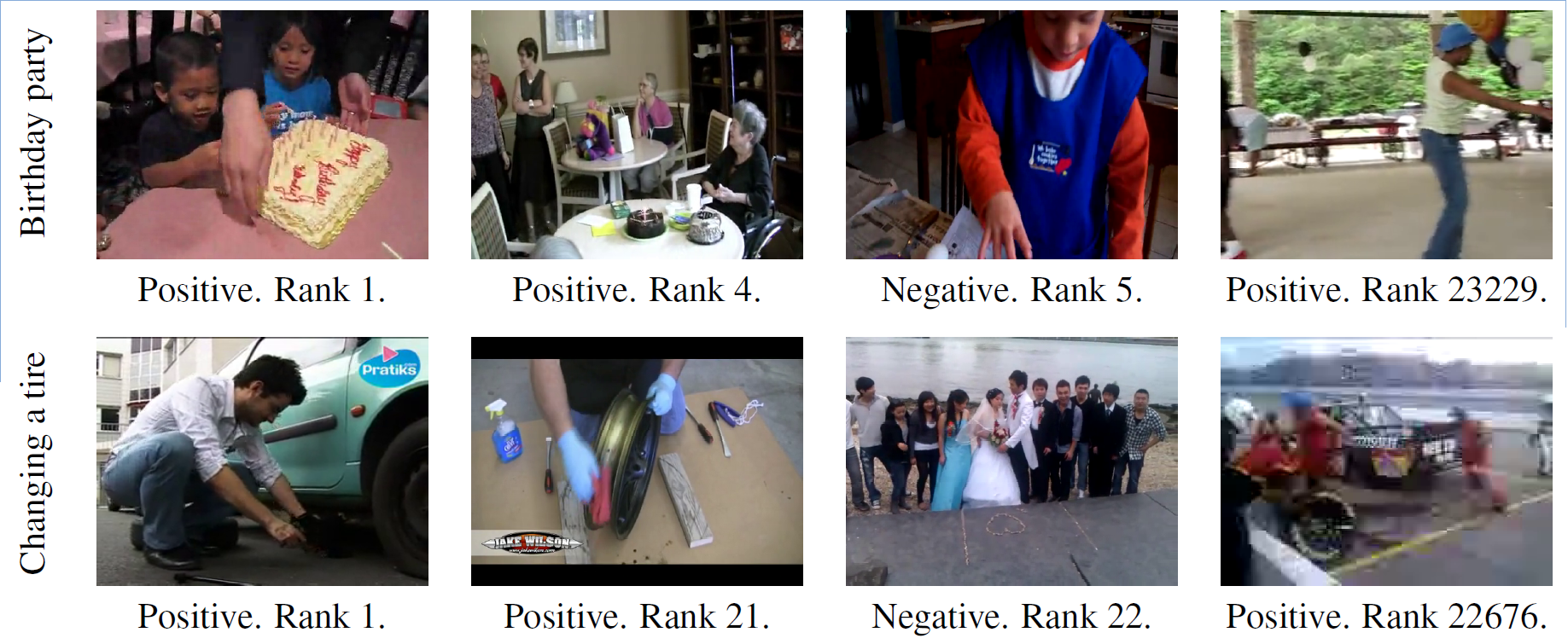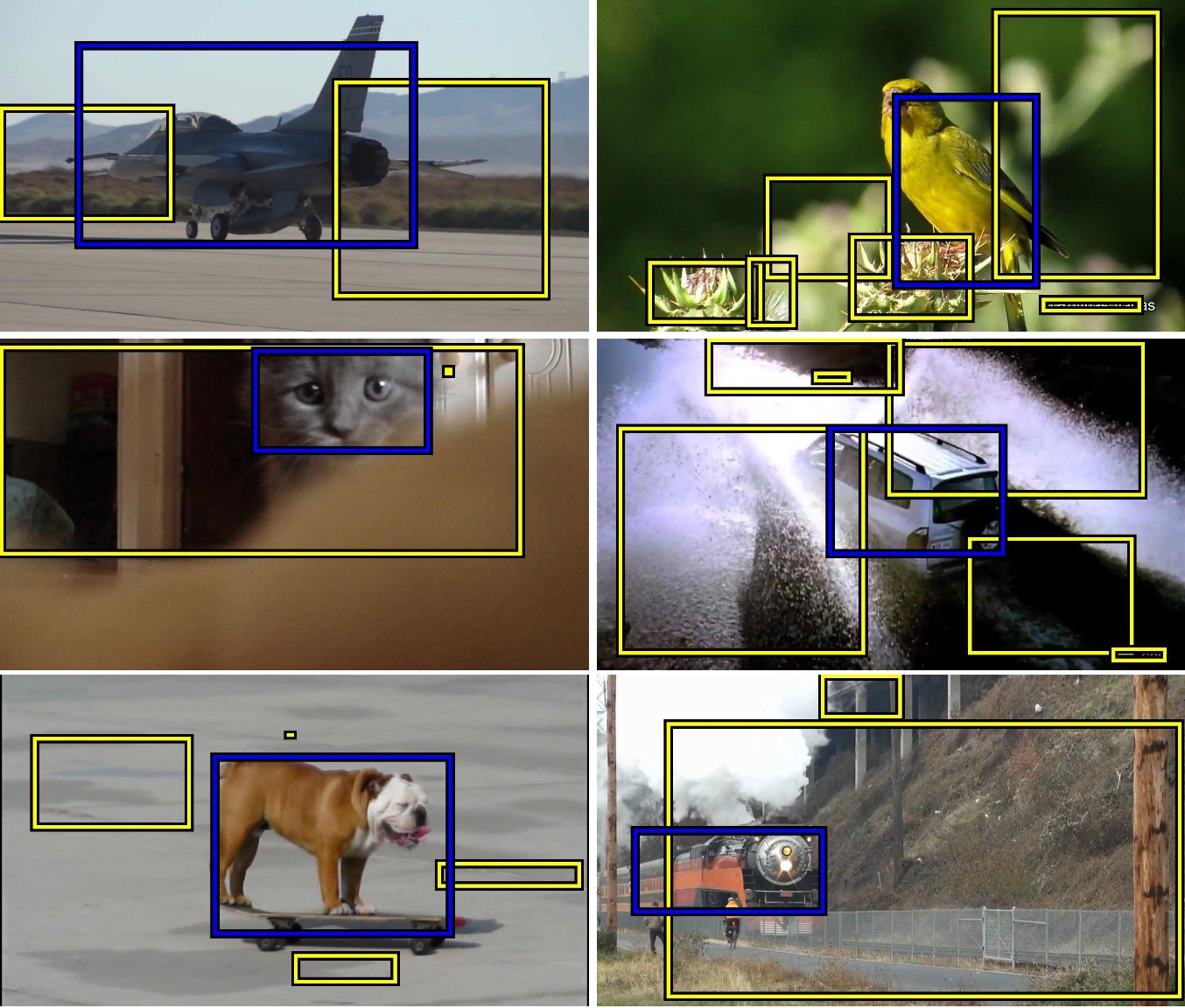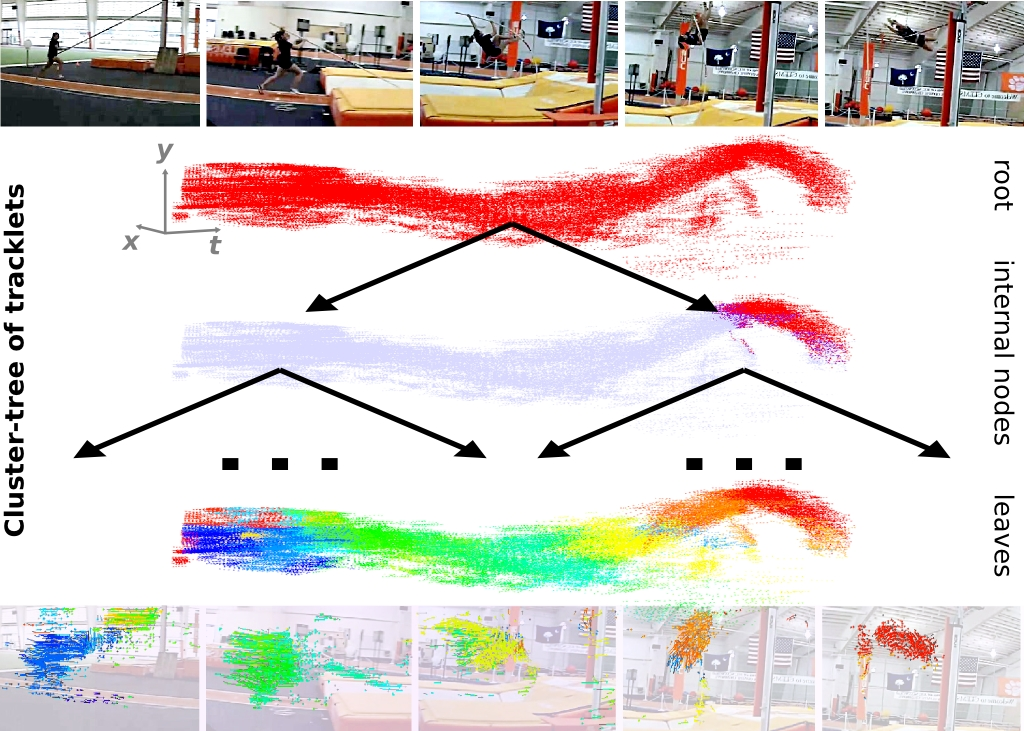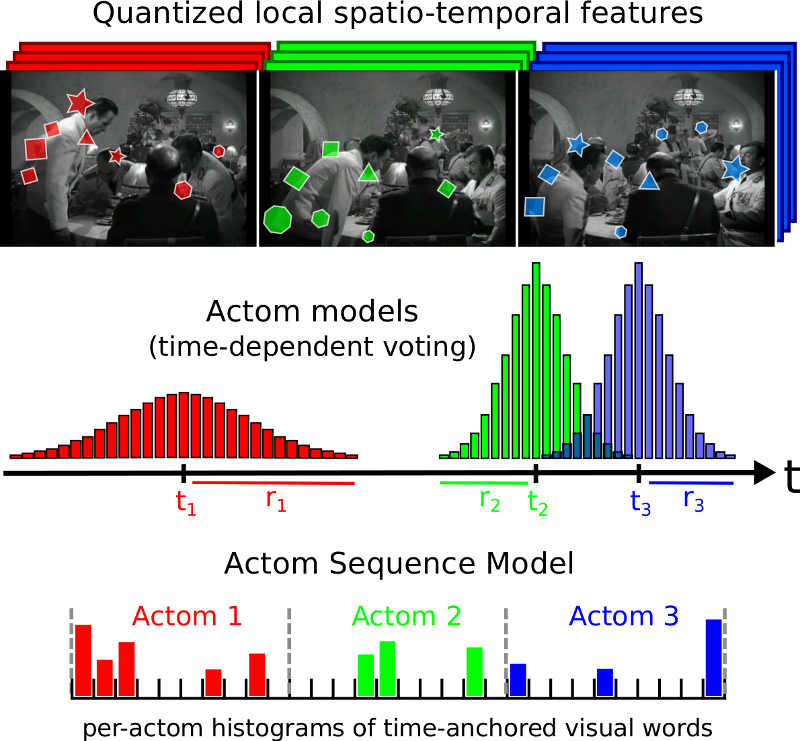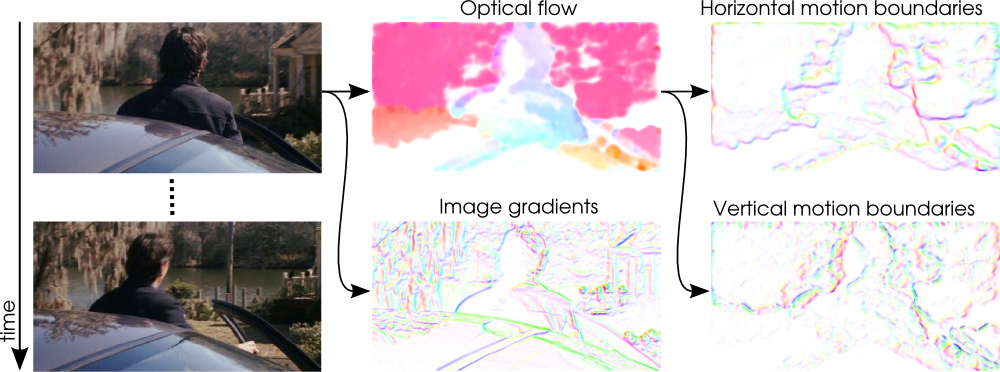Section: New Results
Recognition in video
Large-scale multi-media event detection in video
Participants : Matthijs Douze, Zaid Harchaoui, Dan Oneata, Danila Potapov, Jerome Revaud, Cordelia Schmid, Jochen Schwenninger [Fraunhofer Institute, Bonn] , Jakob Verbeek, Heng Wang.
This year we participated in the TrecVid Multimedia Event Detection (MED) task. The goal is to detect events categories (such as “birthday party”, or “changing a vehicle tire”) in a large collection of around 100,000 videos with a total duration of around 4,000 hours. To this end we implemented an efficient system based on our recently developed MBH video descriptor (see Section 5.4) , SIFT descriptors and, MFCC audio descriptors (contributed by Fraunhofer Institute). All these low-level descriptors are encoded using the Fisher vector representation (see Section 5.3). In addition we implemented an optical character recognition (OCR) system to extract textual features from the video. The system is described in a forthcoming paper [31] , and ranked first and second in two evaluations among the 17 systems submitted by different international teams participating to the task. See Figure 6 for an illustration.
|
Learning Object Class Detectors from Weakly Annotated Video
Participants : Javier Civera, Vittorio Ferrari, Christian Leistner, Alessandro Prest, Cordelia Schmid.
Object detectors are typically trained on a large set of still images annotated by bounding-boxes. In [20] we introduce an approach for learning object detectors from real-world web videos known only to contain objects of a target class. We propose a fully automatic pipeline that localizes objects in a set of videos of the class and learns a detector for it. The approach extracts candidate spatio-temporal tubes based on motion segmentation and then selects one tube per video jointly over all videos. See Figure 7 for an illustration. To compare to the state of the art, we test our detector on still images, i.e., Pascal VOC 2007. We observe that frames extracted from web videos can differ significantly in terms of quality to still images taken by a good camera. Thus, we formulate the learning from videos as a domain adaptation task. We show that training from a combination of weakly annotated videos and fully annotated still images using domain adaptation improves the performance of a detector trained from still images alone.
|
Recognizing activities with cluster-trees of tracklets
Participants : Adrien Gaidon, Zaid Harchaoui, Cordelia Schmid.
In [15] we address the problem of recognizing complex activities, such as pole vaulting, which are characterized by the composition of a large and variable number of different spatio-temporal parts. We represent a video as a hierarchy of mid-level motion components. This hierarchy is a data-driven decomposition specific to each video. We introduce a divisive clustering algorithm that can efficiently extract a hierarchy over a large number of local trajectories. We use this structure to represent a video as an unordered binary tree. This tree is modeled by nested histograms of local motion features, see Figure 8 . We provide an efficient positive definite kernel that computes the structural and visual similarity of two tree decompositions by relying on models of their edges. Contrary to most approaches based on action decompositions, we propose to use the full hierarchical action structure instead of selecting a small fixed number of parts. We present experimental results on two recent challenging benchmarks that focus on complex activities and show that our kernel on per-video hierarchies allows to efficiently discriminate between complex activities sharing common action parts. Our approach improves over the state of the art, including unstructured activity models, baselines using other motion decomposition algorithms, graph matching, and latent models explicitly selecting a fixed number of parts.
Action Detection with Actom Sequence Models
Participants : Adrien Gaidon, Zaid Harchaoui, Cordelia Schmid.
We address the problem of detecting actions, such as drinking or opening a door, in hours of challenging video data. In [26] we propose a model based on a sequence of atomic action units, termed "actoms", that are semantically meaningful and characteristic for the action. Our Actom Sequence Model (ASM) represents the temporal structure of actions as a sequence of histograms of actom-anchored visual features, see Figure 9 for an illutration. Our representation, which can be seen as a temporally structured extension of the bag-of-features, is flexible, sparse, and discriminative. Training requires the annotation of actoms for action examples. At test time, actoms are detected automatically based on a non-parametric model of the distribution of actoms, which also acts as a prior on an action's temporal structure. We present experimental results on two recent benchmarks for temporal action detection: "Coffee and Cigarettes" and the "DLSB" dataset. We also adapt our approach to a classification by detection set-up and demonstrate its applicability on the challenging "Hollywood 2" dataset. We show that our ASM method outperforms the current state of the art in temporal action detection, as well as baselines that detect actions with a sliding window method combined with bag-of-features.
Action recognition by dense trajectories
Participants : Alexander Kläser, Cheng-Lin Liu [Chinese Academy of Sciences] , Cordelia Schmid, Heng Wang [Chinese Academy of Sciences] .
In [28] we introduce a video representation based on dense trajectories and motion boundary descriptors. Trajectories capture the local motion information of the video. A state-of-the-art optical flow algorithm enables a robust and efficient extraction of the dense trajectories. As descriptors we extract features aligned with the trajectories to characterize shape (point coordinates), appearance (histograms of oriented gradients) and motion (histograms of optical flow). Additionally, we introduce a descriptor based on motion boundary histograms (MBH) (see the visualization in Figure 10 ), which is shown to consistently outperform other state-of-the-art descriptors, in particular on real-world videos that contain a significant amount of camera motion. We evaluate our video representation in the context of action classification on nine datasets, namely KTH, YouTube,Hollywood2, UCF sports, IXMAS, UIUC, Olympic Sports, UCF50 and HMDB51. On all datasets our approach outperforms current state-of-the-art results.
|



